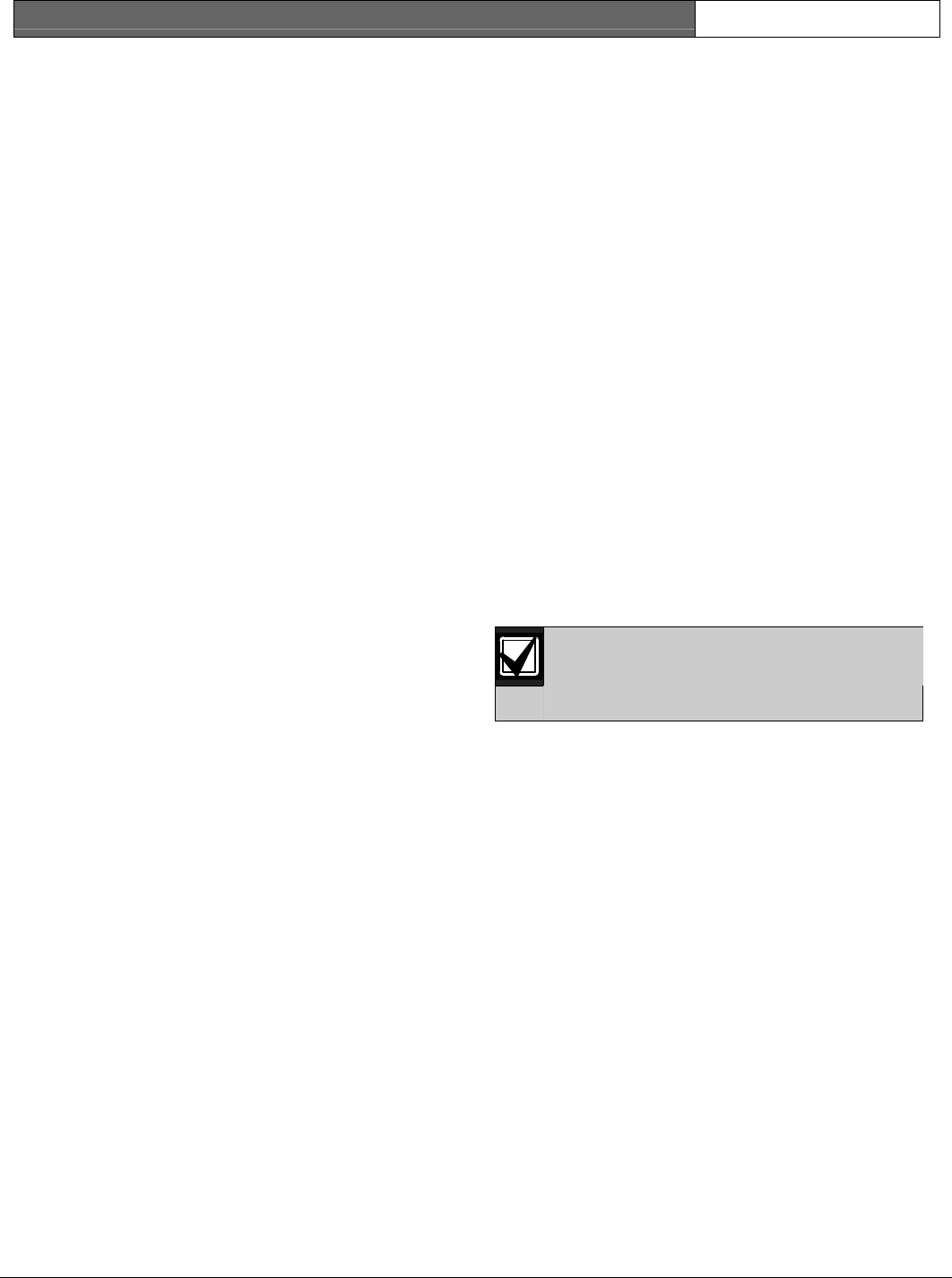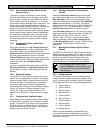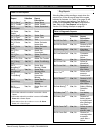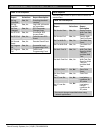
D9412GV2/D7412GV2 | Program Entry Guide | 2.0 GV2MAIN EN | 16
Bosch Security Systems, Inc. | 10/08 | F01U003636-04
2.3.2 Route Number Groups: Which Has the
Highest Priority?
2.3.6 Routing Destination Communication
Failures
To program a group, first choose a route number.
The lower the route number, the higher priority that
group has (for example, events reported for Route 1
have a higher priority than Routes 2, 3, or 4 if each
group tries to send a message at the same time). The
priority of the route numbers becomes important
when programming duplicate reports or choosing the
events you want to report first regardless of the
number of events that must report to multiple groups.
Route 1 group primary device is the first destination
the control panel attempts to dial if an event in that
group must be reported. If the control panel is idle,
any event generated for any group starts a dialing
sequence.
When the R# Primary Device fails to connect with
the central station after one or two attempts (refer to
RG# 1 Attempt in
Route Group Attempts on page
139), it then attempts to connect with the R# Backup
Device (phone number or SDI Path). The central
station receives the original event with a COMM FAIL
PHONE# = (1, 2, 3, or 4) event modifier, if the R#
Primary Device destination is a phone number.
If the R# Primary Device is an SDI Path, the central
station receives the original event with a COMM FAIL
RG# SDI## (SDI 88 + Path 1, SDI 89 = Path 2,
SDI 90 = Path 3, SDI 91 = Path 4) event modifier.
When all attempts to both the R# Primary Device
and R# Backup Device fail, a Comm Fail RG# Event
is generated. Comm Restore Events are not
generated.
2.3.3 Programming Primary and Backup
Destinations
Each route number has an R# Primary Device and
an R# Backup Device. In typical applications where
two phone numbers are programmed, the R#
Primary Device destination is the phone number that
the route group attempts to dial first. If the R#
Primary Device destination does not connect to the
central station receiver after two dialing attempts, the
control panel dials the R# Backup Device
destination.
2.3.7 Message Prioritization within a Route
Number
The D9412GV2/D7412GV2 Control Panels meet the
digital reporting requirements for UL 864. Fire Alarm
Events have the highest priority and reports are sent
first for each group. Other events are sent in the
following order: Panic, Duress, Medical, Intrusion
Alarm, Supervisory, and all troubles and restorals.
You can also program the control panel so that the
R# Primary Device or the R# Backup Device uses
an SDI device, such as a D4020 Network Interface
Module.
2.3.4 Enhanced Routing
The D9412GV2 and D7412GV2 allow events to be
sent to up to four additional SDI Paths. The network
interface module (NIM) connects directly to the SDI
Bus and occupies SDI Address 88. For additional
information regarding the specific programming
requirements for enhanced communications, refer to
Section
2.4 Enhanced Routing on page 24 and
Section
6.5 Programming Path Numbers and IP
Addresses for Enhanced Communications
on page
135.
2.3.5 Programming a Duplicate Report
Select Yes for each available route number to allow
an event within a group to send a report to multiple
groups. For instance, if fire alarms are programmed
for Route Group 1 and Route Group 2, a fire alarm
sends a report first to Route Group 1, followed by a
duplicate report to Route Group 2.
To comply with NFPA and UL 864 ,
program Route 1 to send a report of only
Fire Alarm Events to ensure the fastest
reporting time.
2.3.8 Dialing Attempts
The control panel makes up to ten dialing attempts
using the primary and backup devices within a route
group. If unsuccessful, it sends a Comm Fail Report.
The dialing attempts occur in the following sequence:
1. Primary device
2. Primary device
3. Backup device
4. Backup device
5. Primary device
6. Backup device
7. Primary device
8. Backup device
9. Primary device
10. Backup device
When only one destination is programmed, the
control panel makes ten attempts to contact that
destination. Each group takes approximately 10 min
to go into Comm Fail.


















